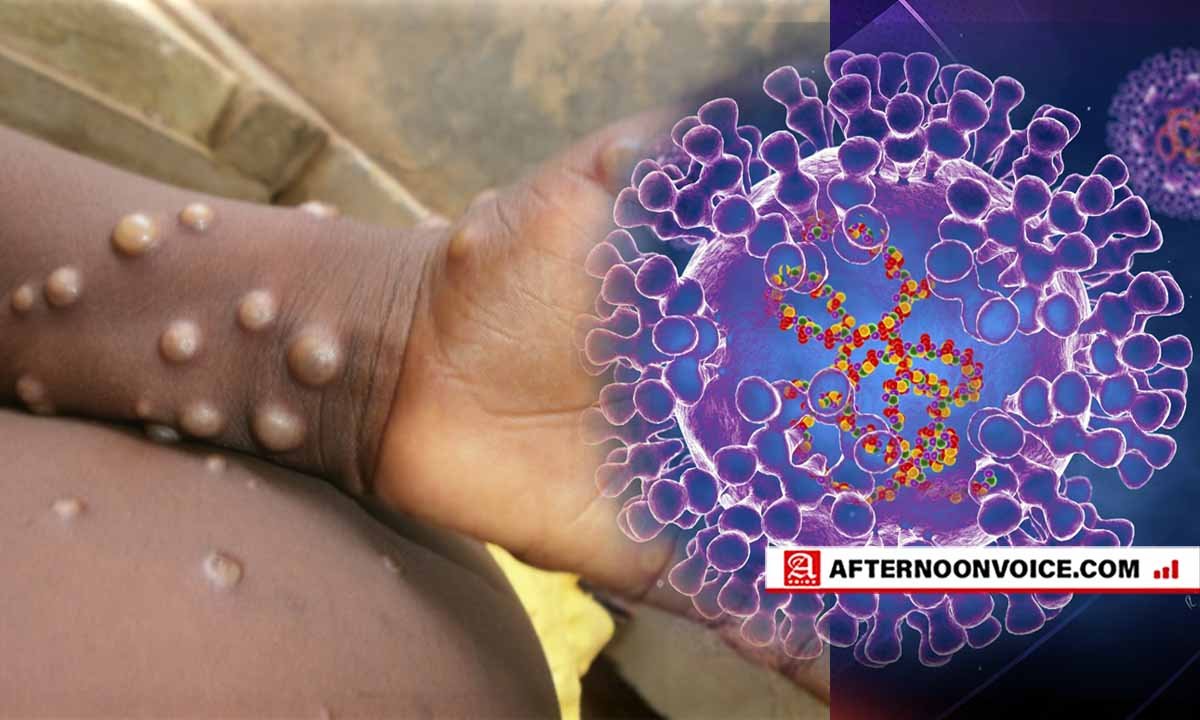
Monkeypox the name may look scary and those pictures spread in the news reports look horrible but don’t worry it will not be as dangerous as COVID if you take adequate precautions. Moreover, this is not a common Indian ailment. Unlike COVID-19, which is highly contagious, monkeypox doesn’t usually spread easily among people. Monkeypox spreads via large respirational dews when people are in close contact; direct contact with skin lesions or bodily fluids; or indirect contact via contaminated clothing or bedding.
Monkeypox is a rare smallpox-like disease that occurs primarily in the rainforest countries of central and west Africa. The disease was discovered in laboratory monkeys in 1958. Studies of animals in Africa later found evidence of orthopoxvirus infection in a number of African rodents. The virus has been isolated from an African tree squirrel, which may be the natural host. Laboratory studies showed that monkeypox also could infect mice, rats, and rabbits.
In 1970, monkeypox was reported in humans for the first time. In June 2003, monkeypox was reported in prairie dogs and humans in the United States. Monkeypox is caused by the Monkeypox virus, which belongs to the orthopoxvirus group of viruses. Other members of this group of viruses that cause infections in humans include variola (smallpox), vaccinia (used for smallpox vaccine), and cowpox viruses. As of Saturday, 92 confirmed cases and 28 suspected cases of monkeypox have been reported from 12 member states that are not endemic to the virus, according to the World Health Organization (WHO).
The UN agency said it expects to identify more cases of monkeypox as it expands surveillance in countries where the disease is not typically found and will provide further guidance and recommendations in the coming days for countries on how to mitigate the spread of monkeypox. Most of the cases reported so far have been detected in the UK, Spain and Portugal. There have also been cases in Canada and Australia, and a single case of monkeypox was confirmed in Boston, with public health officials saying more cases are likely to turn up in the United States.
WHO officials have expressed concern that more infections could arise as people gather for festivals, parties and holidays during the coming summer months in Europe and elsewhere. The UK has begun to inoculate healthcare workers who may be at risk while caring for patients with the smallpox vaccine, which can also protect against monkeypox. The US government says it has enough smallpox vaccine stored in its Strategic National Stockpile (SNS) to vaccinate the entire US population.
There are antiviral drugs for smallpox that could also be used to treat monkeypox under certain circumstances, a spokesperson for the US Department of Health and Human Services said in a statement. More broadly, health officials say that people should avoid close personal contact with someone who has a rash illness or who is otherwise unwell. People who suspect they have monkeypox should be isolated and seek medical care.
In humans, monkeypox is similar to smallpox, except that enlargement of lymph nodes (lymphadenopathy) is associated with monkeypox. About 12 days after exposure, the illness begins with fever, headache, muscle aches, backache, swollen lymph nodes, a general feeling of discomfort, and exhaustion. Within 1 to 3 days (sometimes longer) after the appearance of fever, the patient develops a popular rash (i.e., raised bumps), often first on the face but sometimes initially on other parts of the body. The lesions usually develop through several stages before crusting and falling off.
found in Central and West Africa and those who have travelled there — has been detected in the US, Australia and a number of European countries in recent days in what has been described as an “unusual” spread.
Most people that catch monkeypox have mild flu-like symptoms, such as fever and backache, and a rash that clears by itself within two to four weeks. The rash starts on the face and then spreads to other parts of the body, including the genitalia. The rash features boils that fill with pus and ultimately crust over and fall off. The proportion of those with monkeypox that die from it ranges from 1% to 10% depending on the strain, according to the WHO. It can be hard to tell between monkeypox and other common rashes such as chickenpox. Swollen lymph nodes are a hallmark feature of monkeypox, according to the World Health Organization.
The first known case of the current monkeypox outbreak was announced in the UK on May 7 in an individual who had travelled to Nigeria. Later cases had no link to the first case and had not travelled to where monkeypox is endemic. The total number of cases on Friday was 20 the UK Health Security Agency said. On Friday morning, German and Australian officials were the latest to confirm cases, Reuters reported.
Those came after New York City health officials said they were investigating a “possible” monkeypox case on Thursday — the second infection in as many days after the first US case of 2022 was confirmed on Wednesday.

